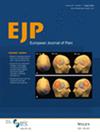Patient Subgroups and Predictors of Improvement in Chronic Neuropathic Pain: A Trajectory-Based Analysis
Abstract
Background
There is limited real-world evidence on predictive factors for good outcomes in patients with chronic neuropathic pain (NP) treated in multidisciplinary tertiary care centres. This study aimed to identify subgroups of NP patients with similar pain trajectories and evaluate associated factors.
Methods
We analysed data from 912 patients with chronic NP (age: 53.6 ± 13.3 years; 51.5% female) enrolled in the Quebec Pain Registry, all of whom reported a baseline pain intensity of ≥ 4/10. Patients completed standardised questionnaires prior to treatment initiation, as well as at 6 and 12 months. Pain trajectories were identified using group-based trajectory modelling (GBTM), with multiple imputation performed to address missing data. The results were confirmed using group-mixture modelling on the non-imputed dataset and using GBTM in the subgroup of patients with complete data.
Results
A three-class trajectory model best fitted the data for both pain intensity and interference. Only 23.1% of patients showed a clear improvement in pain intensity, while 23.5% showed improvement in pain interference. Key predictors of pain intensity improvement included lower baseline pain intensity and interference. Improvement in pain interference was associated with lower baseline interference and depression scores, as well as shorter pain duration. Notably, receiving a strong opioid significantly increased the risk (RR = 1.45 [1.17; 1.78]) of belonging to the persisting severe pain trajectory.
Conclusions
A minority of chronic NP patients demonstrated significant improvement with multidisciplinary treatment. These findings highlight the limitations of current management strategies and emphasise the need for novel therapeutic approaches to address the burden of chronic NP effectively.
Significance
This study highlights the value of trajectory analysis in identifying subgroups of patients with chronic neuropathic pain (NP) who exhibit different patterns of treatment response. Only a minority of patients—approximately 23% for both pain intensity and pain interference—demonstrated meaningful improvement. Lower baseline pain intensity and interference emerged as key predictors of better outcomes, while strong opioid use was associated with persistent severe pain. These findings underscore the importance of trajectory-based approaches for understanding the course of NP and for guiding more personalised and effective management in multidisciplinary care settings.


 求助内容:
求助内容: 应助结果提醒方式:
应助结果提醒方式:


